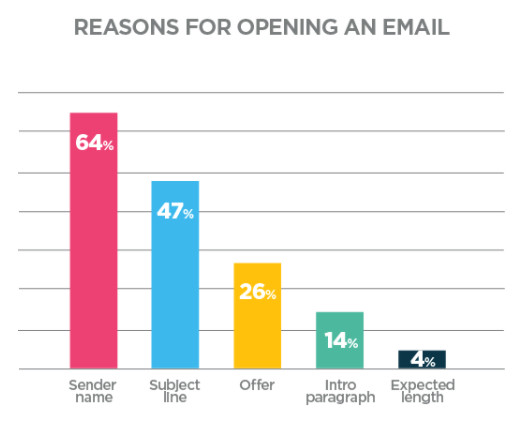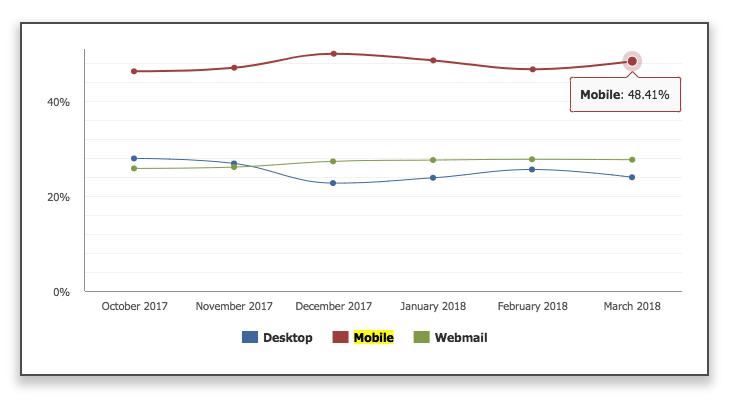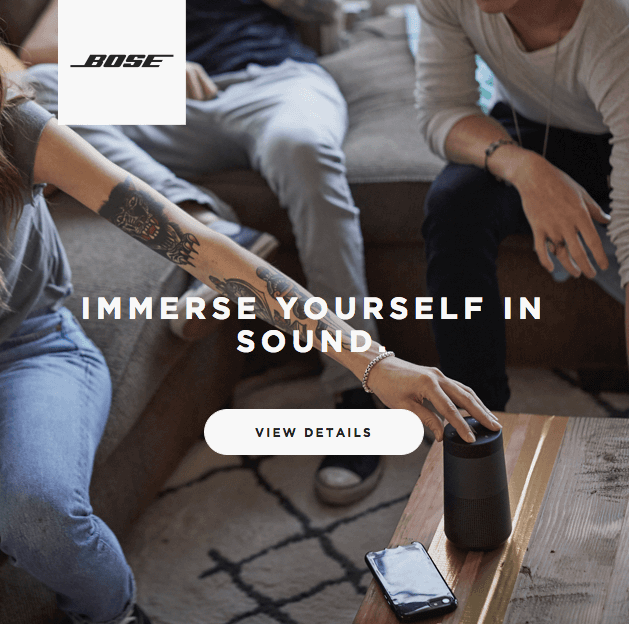
Marketing • Business

Getting your retail email marketing strategy right is a fine art. There's copywriting, design, subject lines, segmentation, timing, A/B testing and more to consider.
To cut through the noise of today’s overcrowded and fiercely competitive inbox, it’s absolutely critical to get each of these things right.
But have you ever wondered exactly what you’re up against—just how full your target customer’s inbox is—and if email marketing is worth your time?
Today’s post will take a look at whether email marketing is still worth it for ecommerce and retail, and teach you what you can do to maximise the chance that your customer will open your email, click and convert.
(This post also comes in watchable format via a webinar we did with Milk It Academy. Watch it now).
Let’s start by looking at some stats that might surprise you.
There are about 111.1 billion consumer emails sent and received every day and an additional 124.5 billion business emails sent and received each day, according to market researchers, Radicati. If you do the maths, it works out that
the average office worker receives, on average 121 emails. Every single day.
With this sheer number of emails landing in inboxes on a daily basis, it’s only natural to think that the effectiveness of email as a marketing channel might be declining. But I’m relieved to tell you that that’s not the case. Let’s look at some more stats to explain.
Yes! According to a study by leading email marketing platform, Campaign Monitor, for every $1 spent on email marketing, $44 is made in return, and Milk It Academy have found that email marketing outperforms SEO, PPC and Content Marketing. In case you’re still not convinced, I sourced these other juicy stats for you:
So now we know that email marketing can be the goose to your golden egg, what should you feed the goose? (what makes up a good email).
Firstly what is an email open rate?
An email open rate measures how many people on your email list opened the email you sent, not including bounces. It’s typically calculated using the following formula:
Open rate = emails opened / emails sent - bounces
So if you get a 20% open rate on an email that was delivered to 1,000 people, this means that 200 people opened your email.
It’s important to note a couple of things about open rates, that makes it difficult to calculate them with 100% accuracy:
Industry benchmarks for email open rates vary widely depending on who you ask
Open rates depend on a variety of factors like list size and send time, so do some testing, look at your numbers and work out your own benchmarks.
Great, so now that we’re on the same page with how open rates are calculated and the fact that there’s no real ‘average’, let’s delve into what factors influence open rates.
In addition to list size and send time, open rates are also impacted by sender name, subject line, offers, intro paragraph (pre-header text) and expected length. And out of these, sender name and subject lines carry the most weight, according to a study by Hubspot.

The sender name is the name that appears in an email inbox indicating who the email is from (also referred to as ‘from name’), and plays a huge part in building trust, credibility and authenticity to encourage recipients to open your email. In research with their own clients, Milk It Academy found that just by changing the sender name, you can increase open rates by an impressive 25%. Test using your business name, or different people from your organisation’s names. If customers know your name then it makes sense to leverage that relationship.
The second most important reason people open an email is subject lines. Subject lines with 40-60 characters perform better than long subject lines, with 6-10 words typically hitting that sweet spot.
With new data from Australian-based email marketing platform, Vision6, showing that 47% of emails are opened on mobile, make sure you craft your subject-lines with the narrower expanse of a mobile screen in mind.

But, a word of warning; what’s deemed best practice, or what works for another brand might not work for you. Longer subject lines can work well for deal sites, for example, because they provides additional information about the various deals included in the email. So look at your data, set your own benchmarks and test, test test.
Personalisation in subject lines still works. But It’s not just about including ‘first name’ in your subject line anymore—segment your list and personalise based on factors like price, product or stage of the customer journey (more on segmentation later).
And what about the style in which you write subject lines? Alita Harvey Rodriguez, Milk It Academy’s director says:
Write subject lines like a status update—active voice vs passive voice and get good at copywriting.
Providing an offer is important, and what that offer is, is also important. People subscribe to your list expecting to receive value, so ensure that you are giving it to them, in a personalised way. Look at your data and customer segments, and provide tailored offers to suit. Set your baseline stats first, test best practice and know what to improve to get better engagement.

The Pre-header space in an email is a valuable piece of real estate that should not be ignored.
What is pre-header text?
The pre-header text is the grey soft text you can see to the right of the sender name and subject line when an email appears in your inbox. As a default, this text will be set to the first line of your email, or will pull in the ‘click here to view online’ or ‘click here to unsubscribe’ text from the above the header in your email, neither of which are going to do you any favours.
To really take advantage of this text, you want it to be a teaser or preview of what’s inside the email, enticing the reader to open it. It should compliment your subject line as the two are often read together.
Example: 2 days only. Shop now with 30% off sitewide.

In MailChimp, you can edit your pre-header text from within the design-builder.

There is SO much information out there on the best days and times for email open rates and it will depend if you are selling B2B, B2C, if you’re looking at clicks, opens or conversions.
Milk It Academy’s own research showed that Wednesday works best for opens, and Thursday for ROI. I’m going to sound like a broken record here, but again, what works for others might not work for you, so test, test and test again!
| Related reading: Double Your Sales and Expand Your Reach With B2B Wholesaling
An email click through rate measures the number of times a reader clicks any links in your email and is a key indicator of engagement and relevancy or, put simply, how well your emails are doing.
There are two ways to calculate email click-through-rates:
1. Click through rate (CTR): the percentage of people that clicked any link or linked image in your email, of those who received the email. So, if your email was sent to 1,000 people and 100 people clicked, you have a 10% click through rate.
2. Click to open rate (CTOR): the number of unique clicks divided by number of unique opens. So using our previous example, if your sent your email to 1,000 people, 200 people opened it and there were 100 unique clicks, the CTOR would be 50%. This metric is a more representative reflection of how engaging your content is.
To optimise your email click through rates there are a number of things you can do, including segmenting your list and emails, designing for mobile and using effective call to actions. Let’s take a look.
To improve your email click through rates, ensure that you are sending super personalised, deeply segmented emails. Why is segmentation so important? Because instead of a ‘spray and pray’ approach, it means that you can be sure you are sending relevant, targeted, and meaningful content to your customers, which will help with conversions. In fact, Campaign Monitor found a 760% increase in revenue from segmented emails over unsegmented emails.
So think about your audience segments and why your email should matter to them. You can segment on a variety of characteristics including:
To dive deeper into how to segment your list based on these characteristics, check out our post The Power of Segmentation and Targeting for Effective Email Marketing, and learn which emails to send when to increase recovery of abandoned carts.
We’ve already briefly touched on this, but with the number of people reading emails and shopping on mobile devices, your emails simply must look good on mobile. Although it’s also important to be aware of the differences in age of your target audience. For example, baby boomers open emails less on mobile devices and almost always transact through a desktop browser.
Our attention span has decreased dramatically as a result of the information-centric technological world we live in and these days we don’t read emails, we scan them. Use bold headings, subheadings and only important product info and let your landing page do the talking.

Use buttons. It sounds obvious but adding a button “Shop Now” can increase clicks by up to 50%, according to Milk It Academy. Experiment with button text, size, and colour depending on the campaign i.e. Shop Now vs. Activate Code.
Send emails based on what your customer did or didn’t do, or what they might do next on your website. If someone signs up for your email list they are hot! Send them an email straight away to say hello. And if someone adds something to their cart and then bails, show some hustle and email them too!
Welcome emails are opened 4X more often and clicked 5X more than regular promotional emails. But most importantly, welcome emails generate 8X more revenue.
Timing is key here. The best thing about abandoned carts emails is that they can be entirely automated using an email marketing tool like SmartrMail, that integrates directly with your ecommerce platform. Learn the 5 Way you Can Supercharge Your Email Marketing with SmartrMail and Neto.
While we could go so much further and deeper into email marketing strategies, tactics and statistics for retail and ecommerce, I’m going to leave it here so that you can take away some actionable tips and start implementing straight away. Happy emailing!
Bonus Tip:
Plan out your email marketing campaigns with these key holidays and dates in mind. Download the 2018 Retail Calendar.
